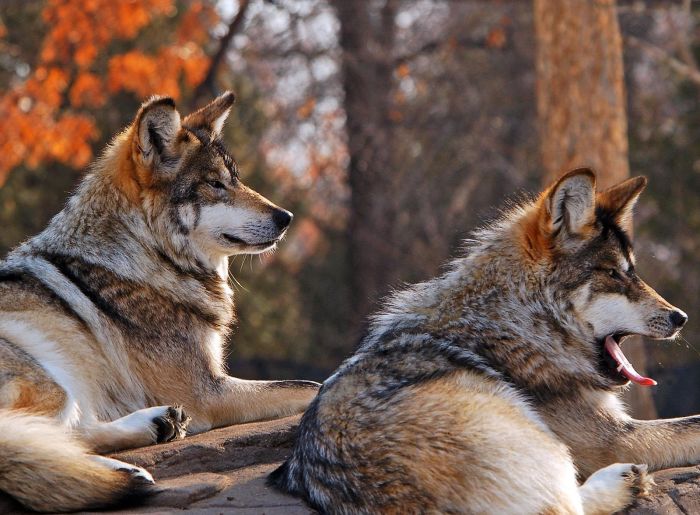|
|
Gray Wolf
|
In areas where human cultures and wolves both occur, wolves frequently feature in the folklore and mythology of those cultures, both positively and negatively.
Evolution
The most likely ancestral candidate of the gray wolf is Canis lepophagus, a small, narrow skulled North American canid of the Miocene era, which may have also given rise to coyotes. Some larger, broader skulled C. lepophagus fossils found in northern Texas may represent the ancestral stock from which true wolves derive. The first true wolves began to appear at the end of the Blancan North American Stage and the onset of the early Irvingtonian. Among them was Canis priscolatrans, a small species closely resembling the red wolf, which colonised Eurasia by crossing the Bering land bridge. The new Eurasian C. priscolatrans population evolved into Canis etruscus, then Canis mosbachensis.
|
|









